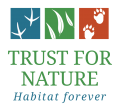The Bank Australia Conservation Reserve is a 927 hectare private nature reserve owned by the bank on behalf of its customers, protecting 13 threatened species, and biodiverse Australian habitats.
Project implemented: 2008 - ongoing
1. Wildlife and habitat conservation and rehabilitation
2. Climate action and resilience
3. Community engagement, including with Traditional Custodians and with the next generation
4. Corporate environmental leadership
5. Staff and customer engagement
Since European settlement, vast areas of Australia have been cleared for agriculture and development. Such change has reduced biodiversity and threatened the survival of many native species. At present, more than 310 species of native animals and over 1180 species of native plants are at threat of extinction. Our reserve has proven to be an innovative way for a business to take tangible action to protect nature.
We have 3 goals to: improve quality of vegetation, protect and increase threatened species, and embed traditional knowledge.
We have 2 goals to: revegetate the reserve with native plant species, and conduct climate change resilience planning.
We have 3 goals to: celebrate Indigenous cultural history, engage local community (inc children), promote social issues.
We have 2 goals to: partner with research institutions, and promote the project to corporate partners and sector leaders.
We have 3 goals to: raise customer awareness (to 60%) , increase customer numbers, and have 10%+ of staff visit each year.
Increased acquisition of new customers who join the bank due to the reserve
Nomination for a Banksia Award (Large Business) category in 2018, for the new 10 year strategy
Increase in numbers of staff joining the bank due to the banks’ purpose and values (inc this project)
Bank Australia is a small retail customer-owned bank headquartered in Melbourne with 411 full time staff and 130 000 customers. The bank’s purpose is to create mutual prosperity through positive economic, social, environmental, and cultural impact.
In 2008, the bank purchased the first of three conservation properties, in order to act on customer concerns about climate action and protecting threatened animal and plant species. The Bank Australia Conservation Reserve has since grown to a 927 hectare private nature reserve, and the bank has invested over $2.5 million over 10 years, planting nearly 100 000 trees and working with community groups, bank customers and staff to rehabilitate the reserve.
The reserve is a world-first project for a bank. It is located in the West Wimmera region of Victoria, an area of Australia within Habitat 141, a landscape scale strategic conservation effort to create a wildlife corridor in a high value conservation region of Australia. The reserve hosts 11 threatened plant and 13 threatened animal species, and a number of rare vegetation types.
In October 2017, in partnership with Trust for Nature and Greening Australia, the bank announced an ambitious ten year strategy for the reserve with five key action areas.
Our strategy ‘Reimagining the Future’ was developed using the Open Standards for the Practice of Conservation, which is an internationally recognised and widely adopted framework for natural resource management planning. In developing our approach we combined scientific expertise with local knowledge and worked with Barengi Gadjin Land Council (the Traditional Custodians group representing the local area) to ensure that traditional land management practice would be incorporated in our ongoing management of the reserve.
Our strategy aligns to three Sustainable Development Goals: SDG 10 – Reduced Inequalities; SDG 13 -Climate Action; and SDG – 15 Life on Land. Our first objective ‘wildlife and land conservation’ outlines our aim to maintain and improve the quality of the vegetation on the reserve and increase populations of threatened animal and plant species. We are working towards SDG 15 through this objective by a) measuring, managing and mitigating impacts on biodiversity and ecosystems, financing the restoration of degraded land for conservation, supporting landscape scale approaches and sharing data and resources with partner organisations, and avoiding biodiversity loss by permanently protecting the land. We have also identified 13 threatened species on the reserve and will take targeted actions to support and enhance the ecosystems and food sources for these species.
Our second objective ‘climate change resilience’ outlines our objectives to maximise carbon sequestration through re-vegetation, model climate change impacts, and to increase local capacity in understanding climate risk and adaptation.
Our third objective, engaging the community, links to SDG 10, by articulating our goals to create economic, cultural and employment opportunities for local Aboriginal people. This includes direct employment, creation of an Indigenous land management trainee-ship program, celebration and recognition of cultural history and spirituality. This objective is also supported by the Bank’s Reconciliation Action Plan, which further embeds these targets.
From a business perspective, the bank is creating shared value through the reserve by:

